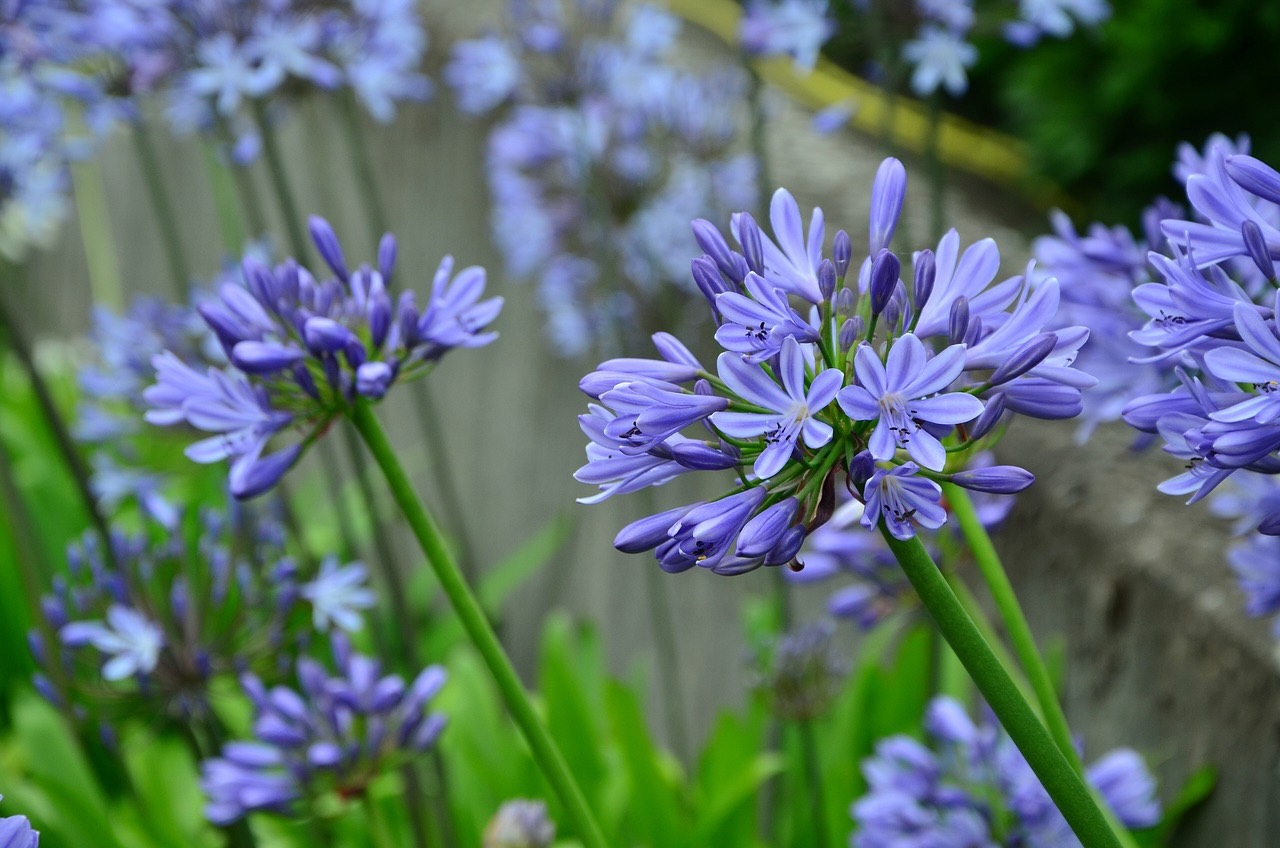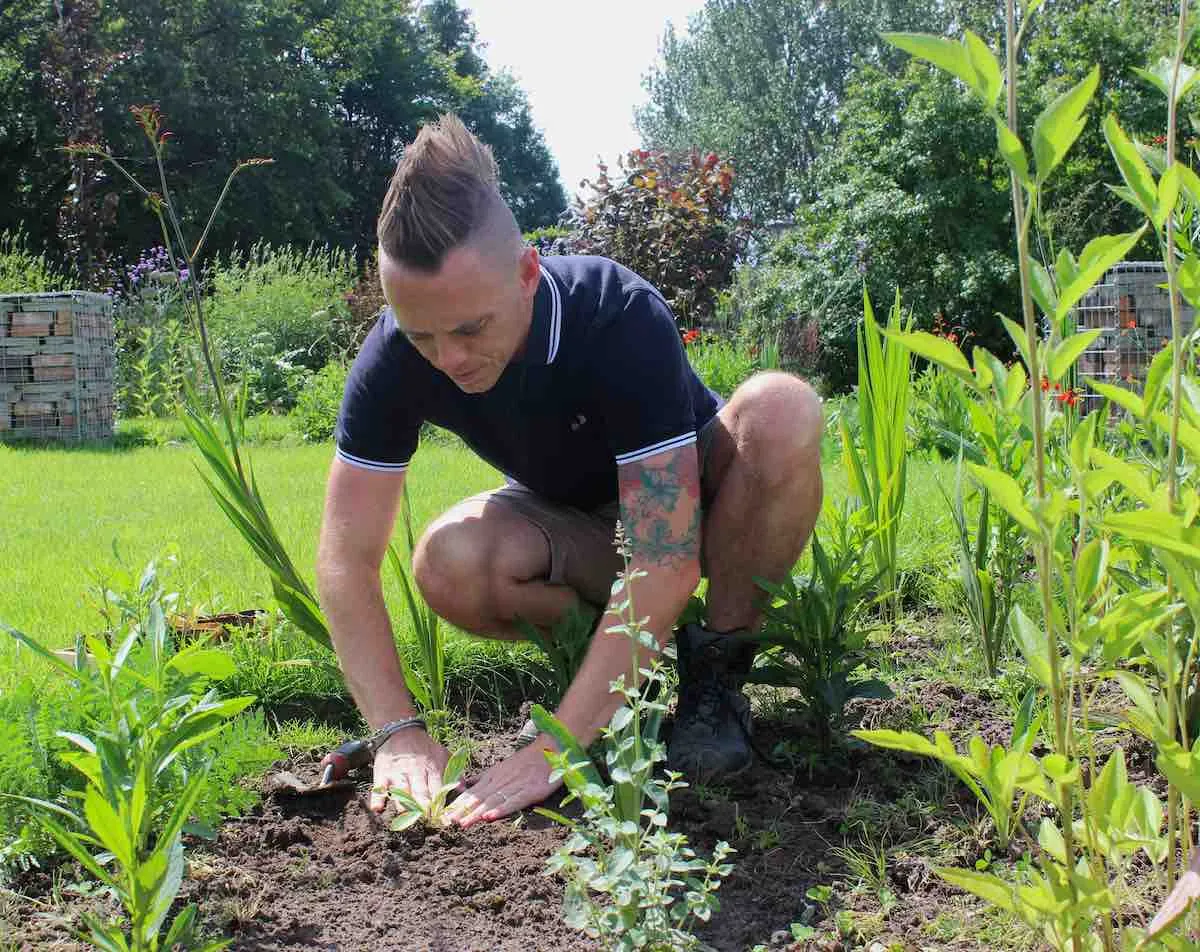Hi @tinkm
Good question about Agapanthus. You're correct when you say that Agapanthus like to be root bound. It brings out the best in them in terms of flowering and performance.
The quick answer is to choose a pot that just and so contains the bare root ball, no bigger. This gets your Agapanthus off to the best start. Always choose a decent peat-free compost and never soil with potted plants and containers.

How to Plant & Care for Agapanthus
Agapanthus, commonly known as Lily of the Nile or African Lily, are beautiful flowering plants that thrive in UK gardens. Here's a brief guide on how to plant and care for Agapanthus:
1. Climate and Sunlight:
Agapanthus prefers full sun to partial shade. In the UK, they do well in areas with plenty of sunlight, especially during the growing season. They can tolerate some shade but may produce fewer flowers in shadier locations.
2. Soil Conditions:
Agapanthus prefers well-draining soil that is rich in organic matter. They thrive in slightly acidic to neutral soil pH levels. Ensure the soil is fertile and moisture-retentive but not waterlogged, as they are susceptible to root rot in waterlogged conditions.
3. Planting:
Plant Agapanthus in the spring or early summer when the soil has warmed up. Choose a location with good sunlight exposure and prepare the planting hole twice as wide as the plant's root ball. Mix in some compost or well-rotted manure to enrich the soil.
4. Spacing Agapanthus
Space Agapanthus plants about 30-60 cm (12-24 inches) apart, depending on the variety. This allows them room to grow and spread without overcrowding. With bareroots dig the hole only marginally bigger than the root ball. For pots choose a size that the bare root just and so fits in as they like their root balls to be restricted.
5. Depth
Plant Agapanthus at the same depth as they were in their nursery containers. Ensure the crown of the plant sits just at or slightly above the soil level to prevent rotting. Same with bare roots, just and so cover the root with 1cm of soil or peat free compost.
6. Watering
Keep the soil moist but not waterlogged, especially during the growing and flowering seasons. Water deeply and infrequently, allowing the soil to dry out slightly between waterings.
https://youtu.be/VpIIaKM69eo
7. Mulching:
Apply a layer of organic mulch, such as compost or bark chips, around the base of the plants to help retain moisture, suppress weeds, and regulate soil temperature. Mulch Agapanthus both in spring and autumn especially if growing them in pots or containers on balconies.
https://youtu.be/ptBotSa2wpw
8. Fertilizing:
Feed Agapanthus with a balanced fertilizer in the spring as new growth emerges. Follow the manufacturer's instructions for application rates. Avoid over-fertilizing, as this can lead to lush foliage growth at the expense of flowers.
https://youtu.be/iFc7YByFIeo
9. Overwintering Agapanthus:
Agapanthus are generally hardy in the UK, but they may benefit from some winter protection in colder regions. Apply a thick layer of mulch around the base of the plants to insulate the roots from freezing temperatures.
10. Division:
Every few years, divide overcrowded Agapanthus clumps to rejuvenate the plants and promote better flowering. Dig up the clump in the spring or autumn, carefully separate the individual plants, and replant them in fresh soil.
https://youtu.be/Dv3mhh1eFFc
I hope that helps!
Lee Garden Ninja
Hi @tinkm
Good question about Agapanthus. You're correct when you say that Agapanthus like to be root bound. It brings out the best in them in terms of flowering and performance.
The quick answer is to choose a pot that just and so contains the bare root ball, no bigger. This gets your Agapanthus off to the best start. Always choose a decent peat-free compost and never soil with potted plants and containers.

How to Plant & Care for Agapanthus
Agapanthus, commonly known as Lily of the Nile or African Lily, are beautiful flowering plants that thrive in UK gardens. Here's a brief guide on how to plant and care for Agapanthus:
1. Climate and Sunlight:
Agapanthus prefers full sun to partial shade. In the UK, they do well in areas with plenty of sunlight, especially during the growing season. They can tolerate some shade but may produce fewer flowers in shadier locations.
2. Soil Conditions:
Agapanthus prefers well-draining soil that is rich in organic matter. They thrive in slightly acidic to neutral soil pH levels. Ensure the soil is fertile and moisture-retentive but not waterlogged, as they are susceptible to root rot in waterlogged conditions.
3. Planting:
Plant Agapanthus in the spring or early summer when the soil has warmed up. Choose a location with good sunlight exposure and prepare the planting hole twice as wide as the plant's root ball. Mix in some compost or well-rotted manure to enrich the soil.
4. Spacing Agapanthus
Space Agapanthus plants about 30-60 cm (12-24 inches) apart, depending on the variety. This allows them room to grow and spread without overcrowding. With bareroots dig the hole only marginally bigger than the root ball. For pots choose a size that the bare root just and so fits in as they like their root balls to be restricted.
5. Depth
Plant Agapanthus at the same depth as they were in their nursery containers. Ensure the crown of the plant sits just at or slightly above the soil level to prevent rotting. Same with bare roots, just and so cover the root with 1cm of soil or peat free compost.
6. Watering
Keep the soil moist but not waterlogged, especially during the growing and flowering seasons. Water deeply and infrequently, allowing the soil to dry out slightly between waterings.
7. Mulching:
Apply a layer of organic mulch, such as compost or bark chips, around the base of the plants to help retain moisture, suppress weeds, and regulate soil temperature. Mulch Agapanthus both in spring and autumn especially if growing them in pots or containers on balconies.
8. Fertilizing:
Feed Agapanthus with a balanced fertilizer in the spring as new growth emerges. Follow the manufacturer's instructions for application rates. Avoid over-fertilizing, as this can lead to lush foliage growth at the expense of flowers.
9. Overwintering Agapanthus:
Agapanthus are generally hardy in the UK, but they may benefit from some winter protection in colder regions. Apply a thick layer of mulch around the base of the plants to insulate the roots from freezing temperatures.
10. Division:
Every few years, divide overcrowded Agapanthus clumps to rejuvenate the plants and promote better flowering. Dig up the clump in the spring or autumn, carefully separate the individual plants, and replant them in fresh soil.
I hope that helps!
Lee Garden Ninja
 Lee Burkhill: Award Winning Designer & BBC 1's Garden Rescue Presenters Official Blog
Lee Burkhill: Award Winning Designer & BBC 1's Garden Rescue Presenters Official Blog



